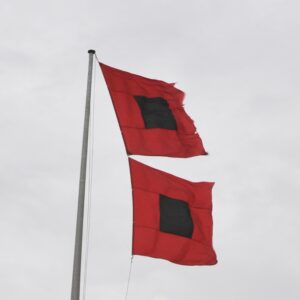“I was born in a crossfire hurricane,
And I howled at my ma in the driving rain”
Mick Jagger/Keith Richards, “Jumpin’ Jack Flash”
 Hurricane Ian has moved through Florida and is headed northeast, expected to make landfall sometime on Friday afternoon, September 30, just east of here in South Carolina, exact destination unknown. For a while it looked like it was headed straight for us here in Savannah, and with a wobble here or there, it may still. Outside my window the skies are dark, and the trees are already bent low with the winds, which, coming from the north, have also refreshingly brought fall here as well.
Hurricane Ian has moved through Florida and is headed northeast, expected to make landfall sometime on Friday afternoon, September 30, just east of here in South Carolina, exact destination unknown. For a while it looked like it was headed straight for us here in Savannah, and with a wobble here or there, it may still. Outside my window the skies are dark, and the trees are already bent low with the winds, which, coming from the north, have also refreshingly brought fall here as well.
As the week progressed, there was the usual range of opinions here about the storm’s impact. Some felt that our area would get nothing more than a typical afternoon summer storm. Others feared a Hurricane Camille redux—she of the nearly-200 mph winds that hit the Mississippi Gulf Coast in 1969. DIY and grocery stores have seen the usual panic-buying, and I can personally attest that one local adult beverage retailer was doing business yesterday worthy of St. Patrick’s Day.
Ian is the fourth-strongest hurricane to ever hit Florida’s west coast, and ranks with Charley (2004), Michael (2018), and Andrew (1992) among the most powerful storms in US history.
There have only been four Category 5 hurricanes in US history—winds at 157 mph and beyond—and Ian missed making it five by only 2 mph. Those four are: the Labor Day hurricane of 1935 (storms were not named until 1953, and not for men until 1979), considered the strongest storm ever to hit the US when it made landfall in the Florida Keys on September 2 with wind speeds estimated at 185 mph. It killed 409 people.
The aforementioned Hurricane Camille hit the Mississippi Gulf Coast on August 17, 1969, with sustained winds of 170 mph, killing 250 people. There is a legendary story of a group of revelers that holed up in a Gulf Coast apartment building in Pass Christian, Mississippi, ignoring all evacuation warnings. The apartment building was literally blown away by winds that gusted to 200 mph. The party-goers, according to folklore, were never seen again. Legend or not, the actual devastation was catastrophic.
Hurricane Andrew in 1992 is next, with 165 mph winds that destroyed 50,000 homes in south Florida and killed 23. Andrew’s damage was estimated at $26 billion, the costliest storm ever up to that time, not surpassed till Katrina thirteen years later in 2005. Incidentally, Katrina’s winds at sea reached 175 mph but it hit New Orleans as a Category 3, killing 1,800 and costing $125 billion, reinforcing the maxim that the strongest storms are not necessarily the deadliest.
Finally, you may remember Michael in 2018, which hit the Florida panhandle after rapidly intensifying to wind speeds of 165 mph.
Here in Georgia, Hurricane Matthew skirted our coast without making landfall in October 2016, bringing lots of wind, rain, and storm damage. The last hurricane to make landfall in Georgia was David 43 years ago in 1979 as a Category 1. For those keeping score, we’ve not had a direct hit in Georgia from a major storm—at Category 3 or above—in 124 years, since 1898. For those interested in the history of hurricanes in Georgia, I covered all of this in a 2017 podcast that you can listen to here.
For the record, there’s been only one Hurricane Stan, a Category 1 storm in 2005, and there won’t be another—the name was retired for Atlantic storms that year and replaced by Sean.
Whatever happens this week, there’s bound to be more Ians to come, given the frequency and intensity of recent storms and the wildly fluctuating global weather. Eventually Georgia’s 124-year-old streak is bound to end. Here’s hoping I’ve retired to Scotland by then.
Stay safe.

Scotland! Is that North of here?
Stan, don’t forget that it rains a lot in Scotland as well!
Aye, but if I had the choice between a drying out from a hurricane or sitting by the fire and drying out from the rain in Scotland, I’d choose the latter every day of the week.